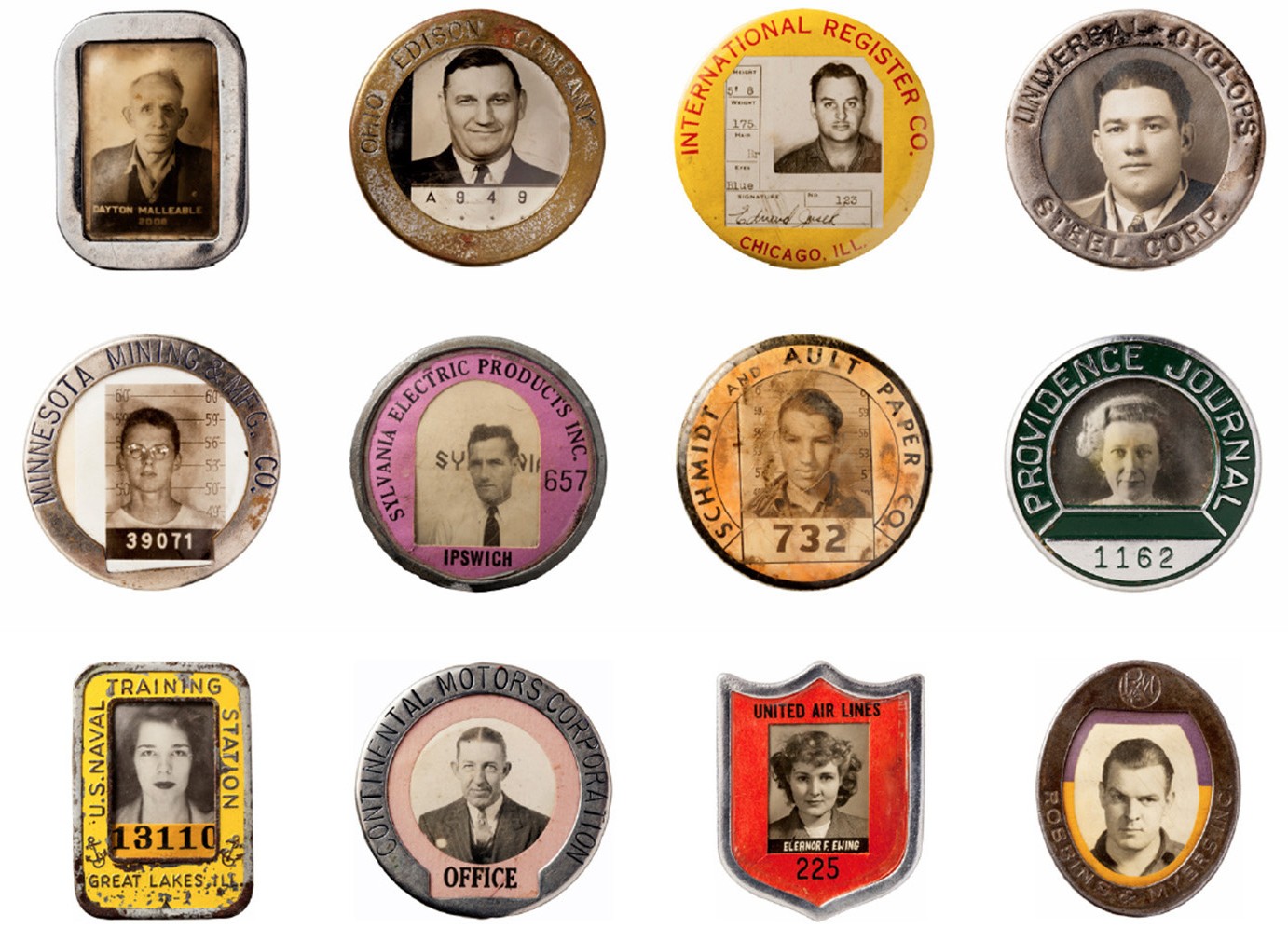
Who were they? Who was #994 of the Hercules Powder Company of Radford, Va.; #279 of the Eagle Lock Company (wearing a jaunty Irish cap); #225 of United Airlines — who, in fact, also had a name that has come down to us through the years: Eleanor F. Ewing. They, and countless others, were American workers across a wide spectrum of occupations, all unintentionally memorialized by their portrait-bearing employee identification badges.
An exhibition of some 250 of these badges, collected by Frank Maresca and imaginatively staged at the Ricco/Maresca Gallery in New York City, introduces a new and engrossing type of photographic Americana. Made between the 1930s and the 1950s, the badges testify to a time when America worked its way out of the Great Depression and became an industrial powerhouse. Jobs were a critical definer of identity for people across the country, and having one’s picture taken was not at all the common occurrence it is today.
It’s hard to say which aspect of the exhibition is more poignant: the names of the companies themselves, now mostly long gone, or the startlingly vivid portraits of “ordinary” American working men and women. Most of the subjects are identified only by a number and a photo in a small round frame, but where there are names (and even where there aren’t), the viewer finds it impossible not to wonder: What was it like for bespectacled Clark Smith to work for the Timken Roller Bearing Company? Young Raymond Farley looks like a deer in the headlights; how long did he last with the Penn Fruit Company? And the stylishly coiffed and lipsticked woman who could have been a 1950s advertisement for the Green Duck Company of Chicago — what was her position with the firm? Executive secretary? Eye-candy at a retail counter?
The rise in interest among collectors and curators in so-called “vernacular photography” has skyrocketed in the last decade. Everything from thrift-store snapshots to pages from police mug books are finding their way into galleries and museums, perhaps as a result of the passing of the last pre-digital generation. At the same time, the Internet has made us aware as never before of the vastness and diversity of photography, at the same time that it has reinforced the notion that the most vivid and direct access to other people’s experience – and to the past – is visual. That last assumption may or may not be true, but what strikes us today, looking at these faces – serious, anxious, joyful, surprised and, not incidentally, almost all Caucasian faces – is how distant they seem from the world we inhabit.
They are portraits from a time when America was a much less diverse nation, economic expectations were generally more modest, and the path to some degree of financial security often began at a factory gate. These workers might have inspired — or stepped straight from the lyrics of — a Woody Guthrie song. They all look like they know exactly what it means to really work for a living, and to be vulnerable to layoffs, plant closings and other personal and communal calamities.
Then again, in an age of stubbornly high unemployment and economic uncertainty, looking at these badges brings us uncannily close to the face, and perhaps the fears, of the American worker today.
Lyle Rexer is a critic, curator and educator. He is the author of many books and articles on photography including The Edge of Vision: the Rise of Abstraction in Photography.
ID Photobadge Portraiture runs at Ricco/Maresca until Feb. 15, 2014.
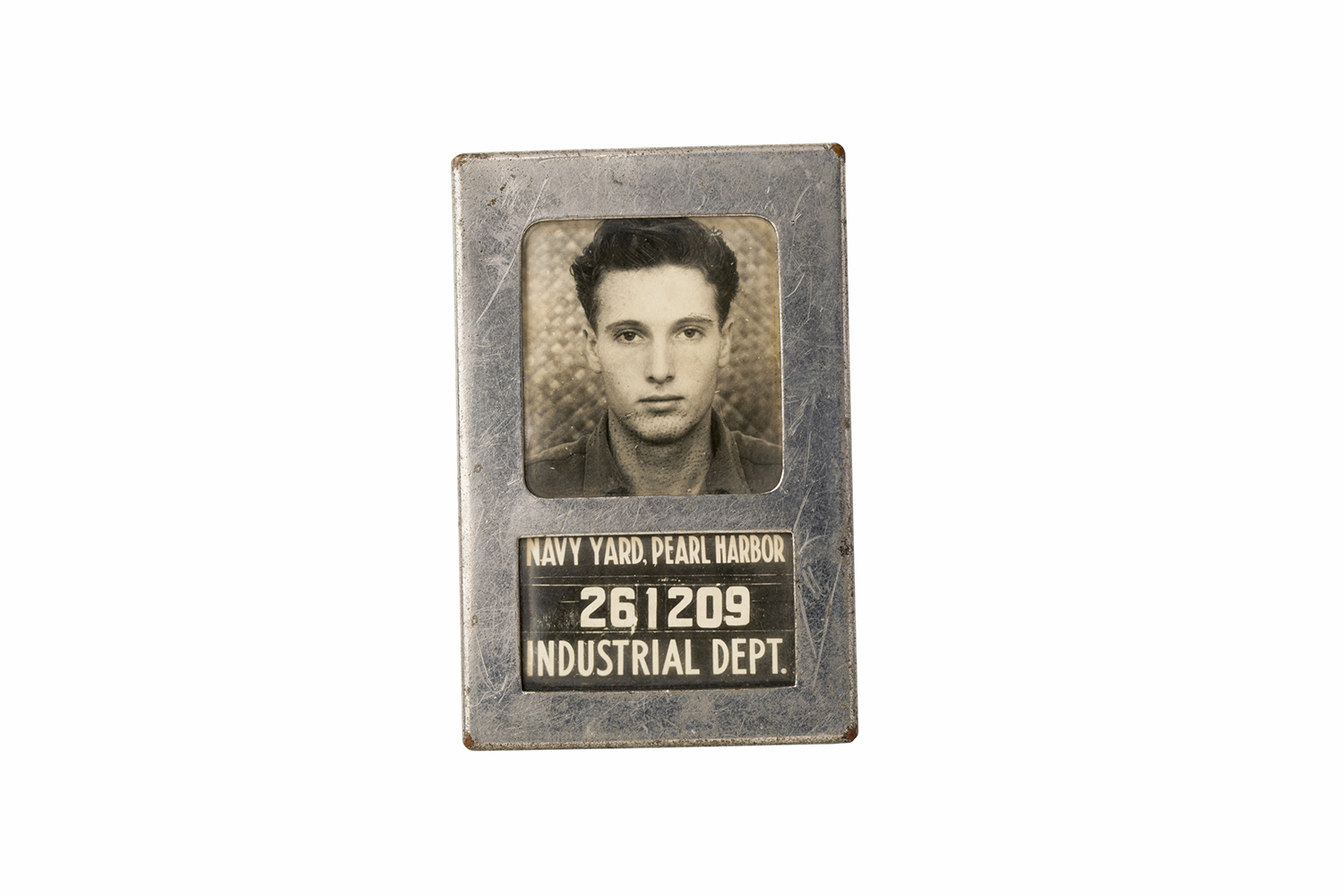
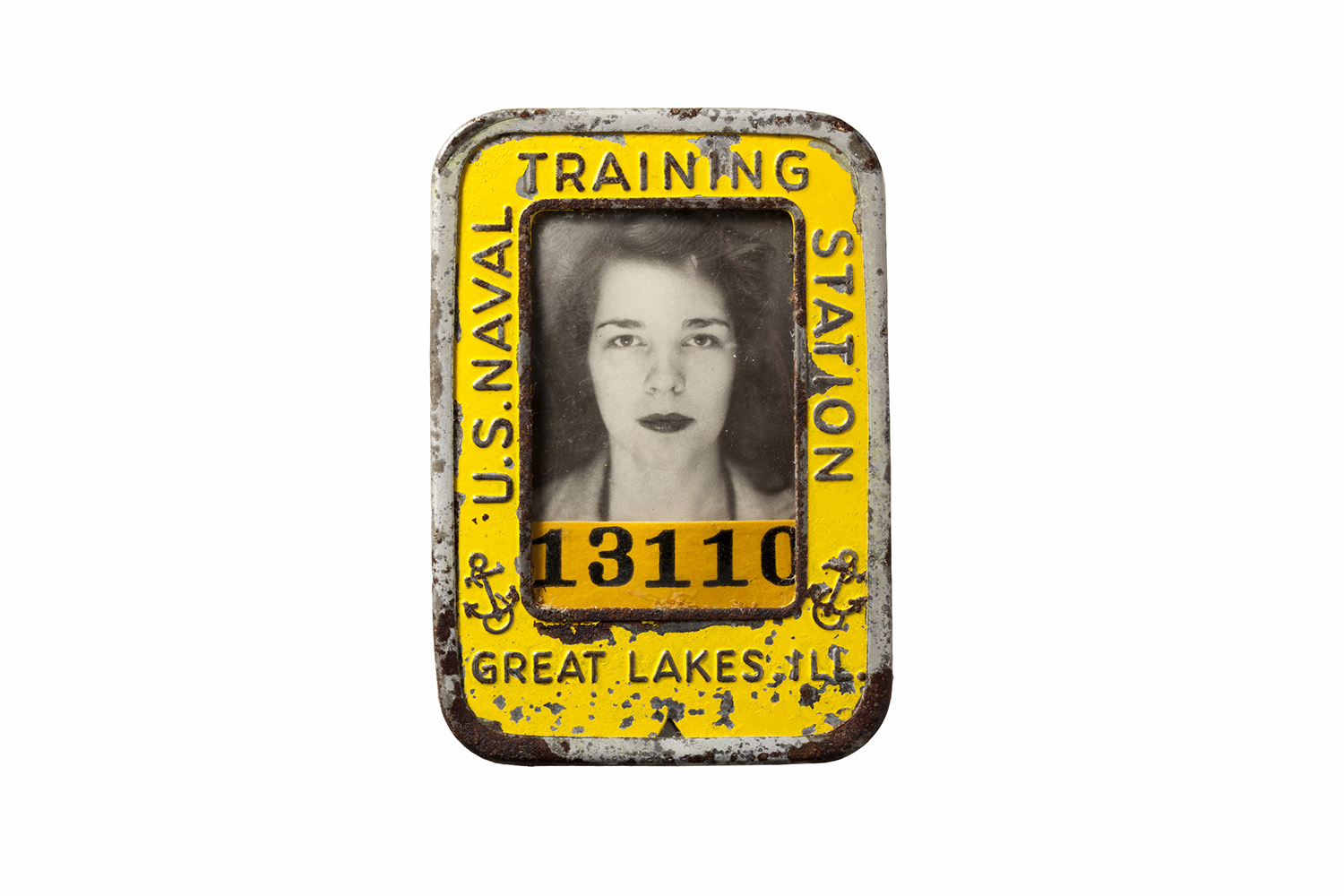
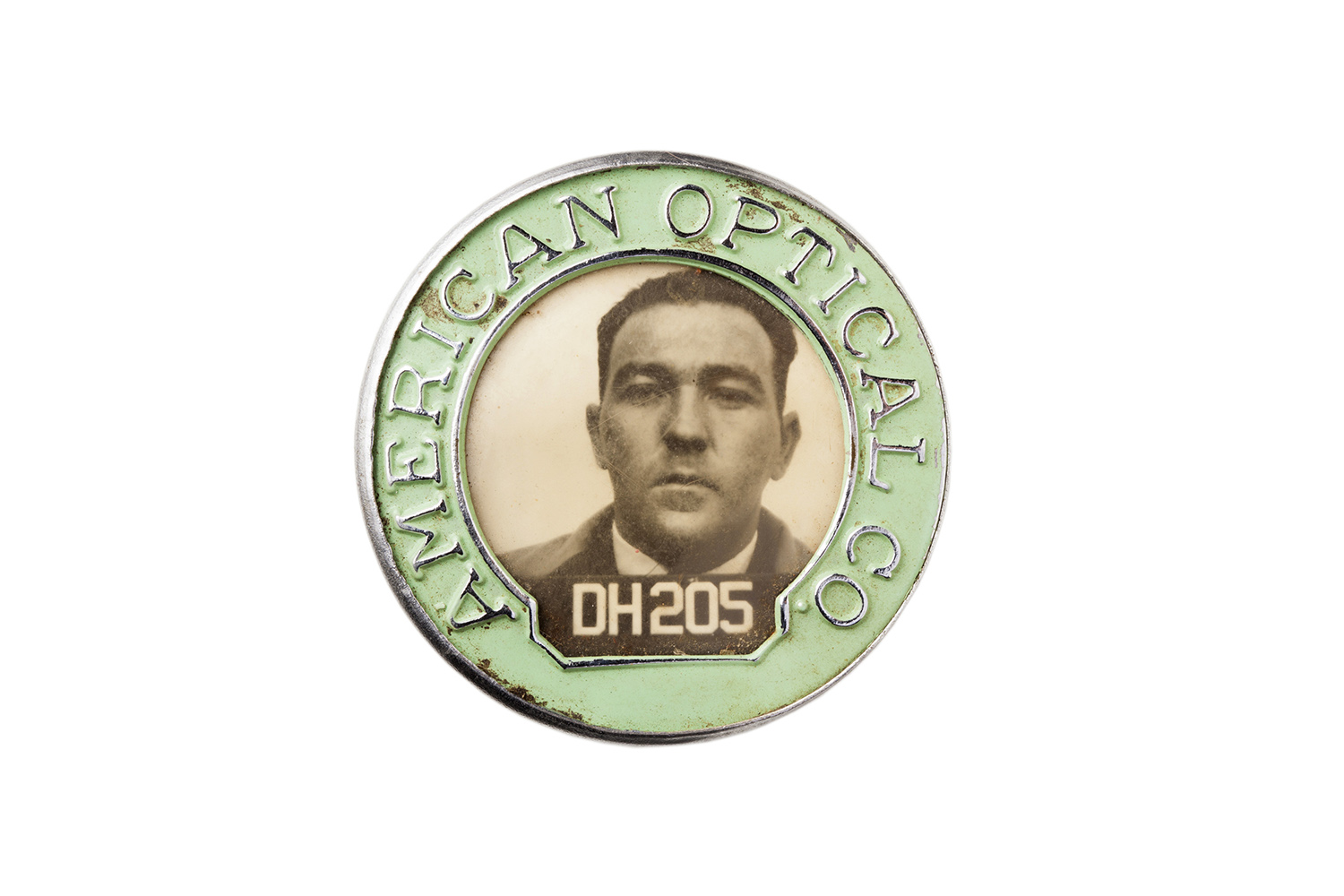

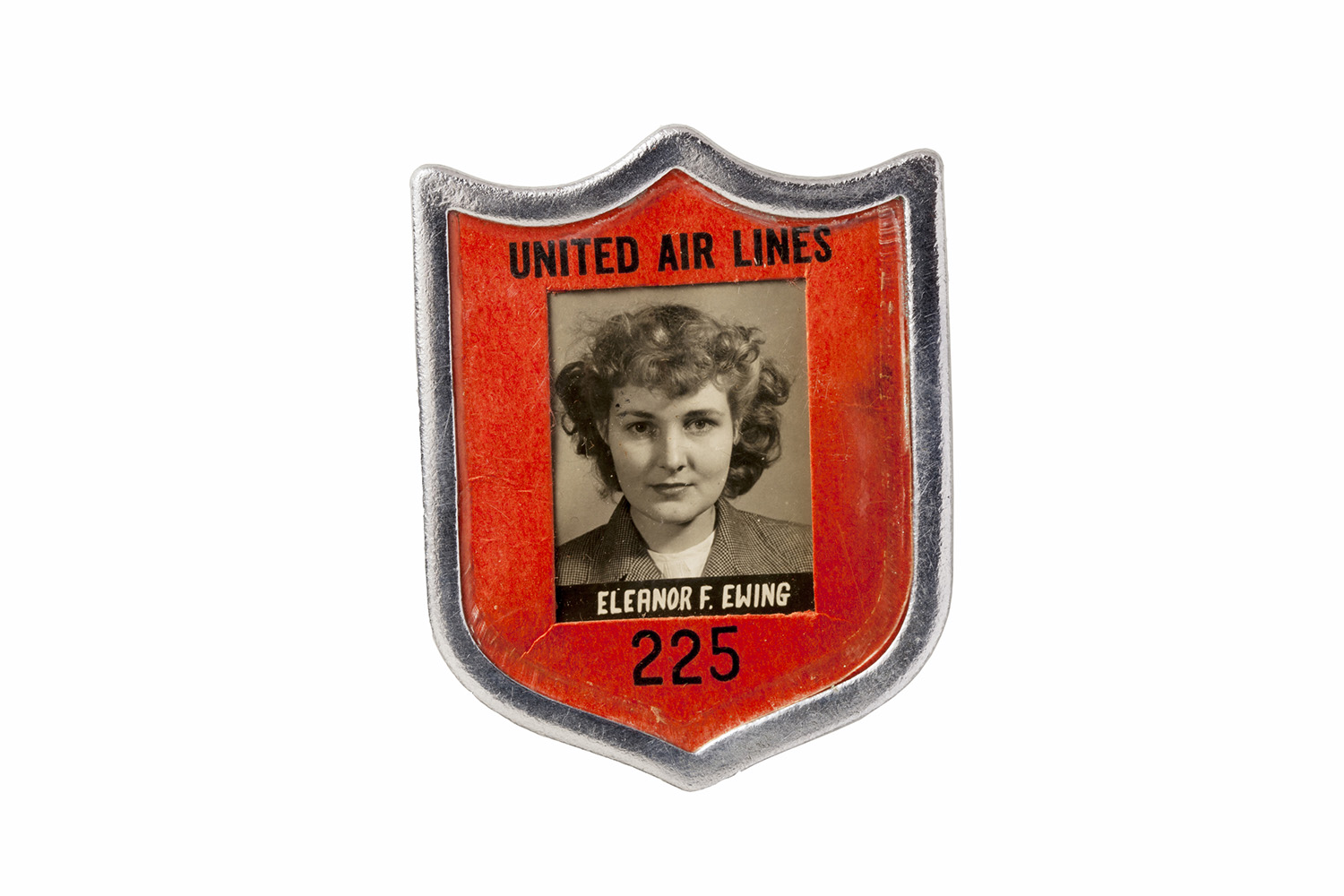

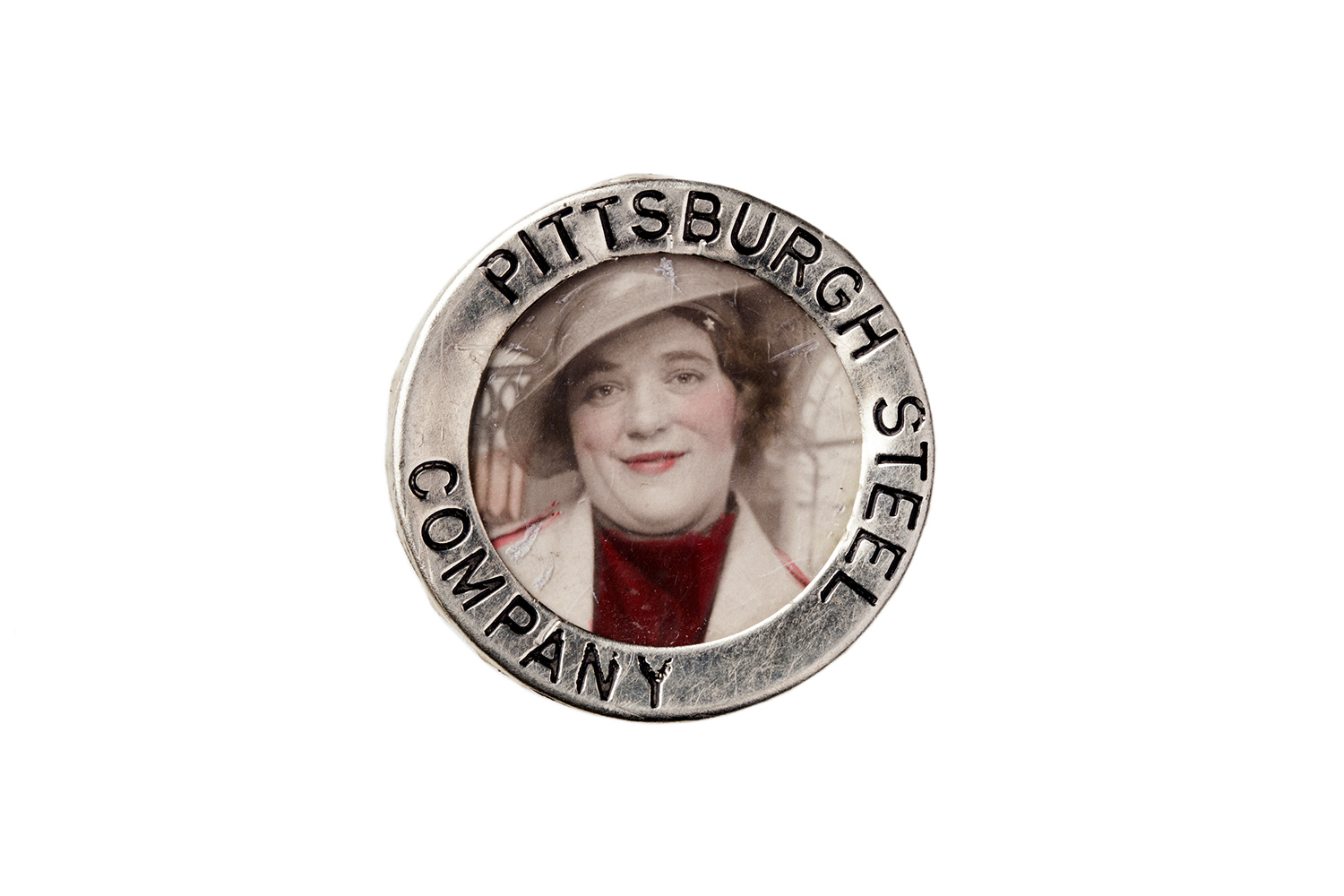

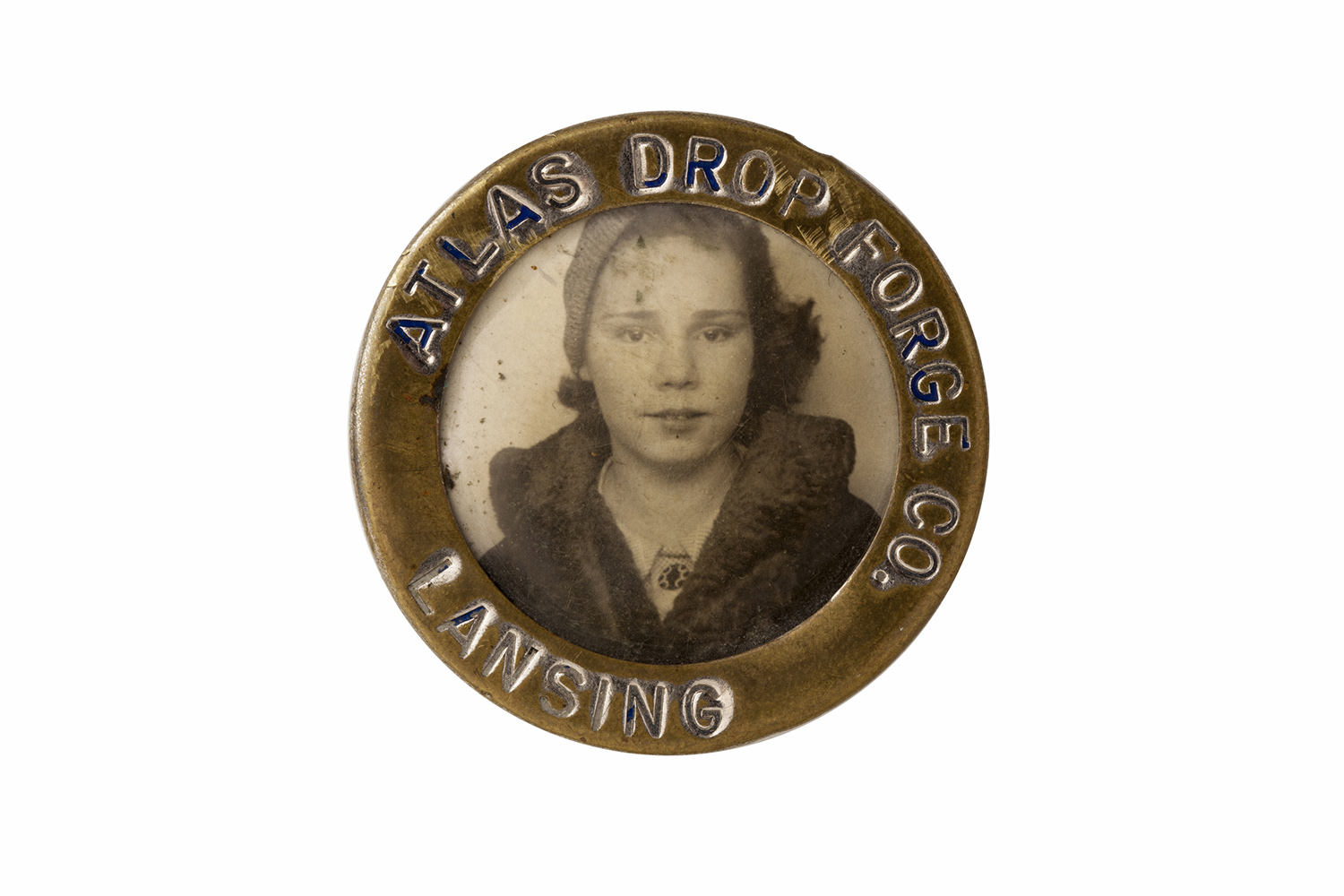

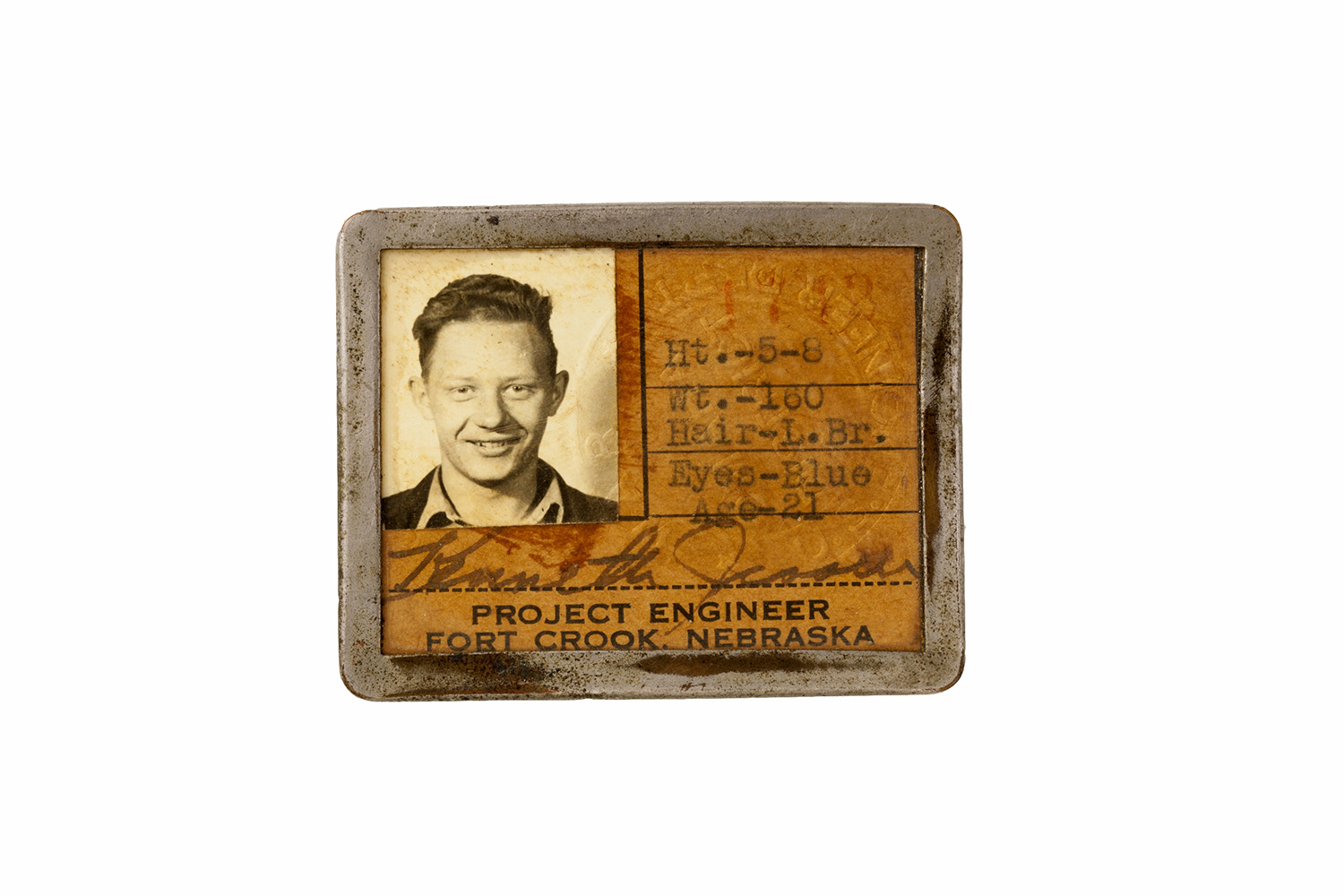
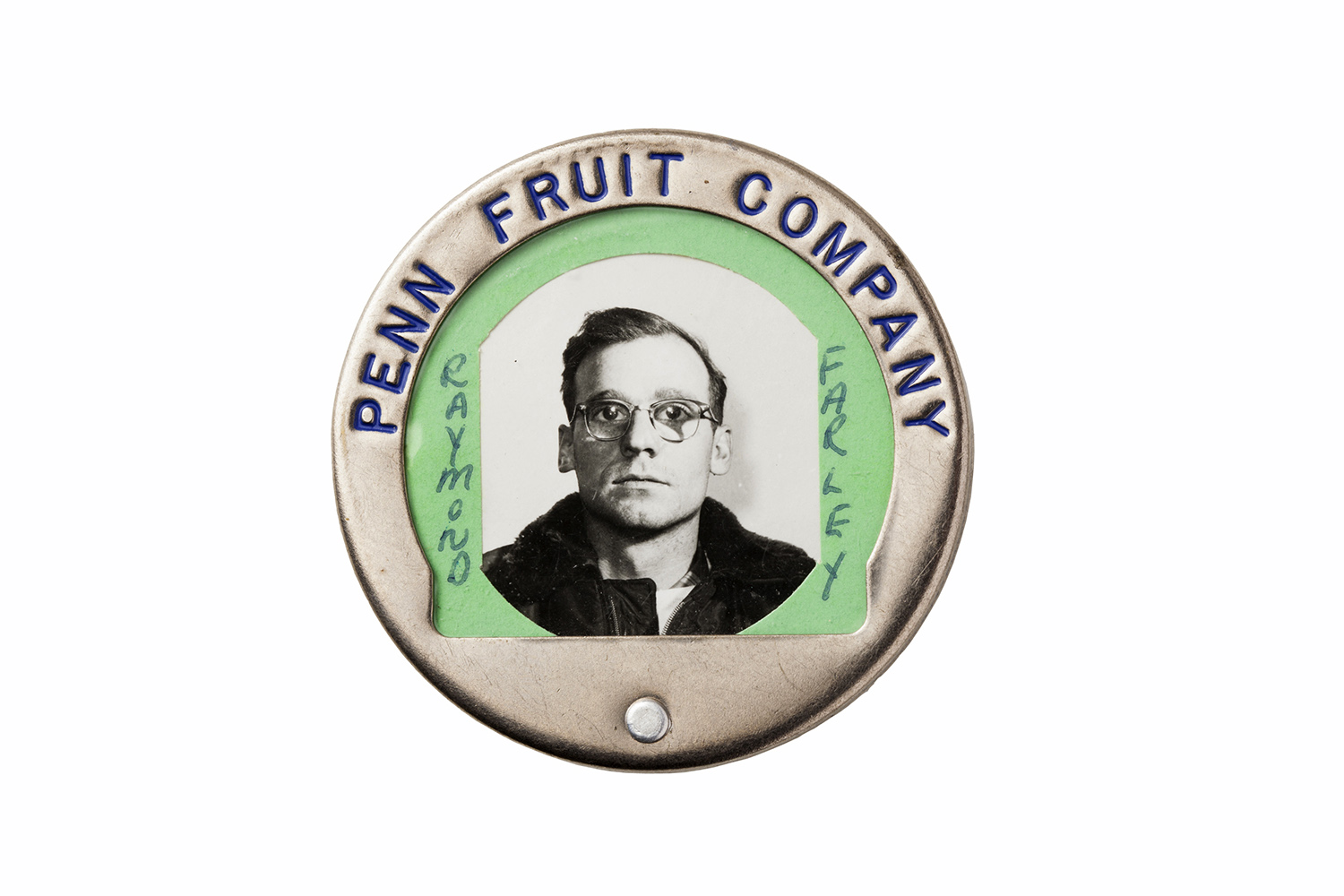

More Must-Reads from TIME
- Cybersecurity Experts Are Sounding the Alarm on DOGE
- Meet the 2025 Women of the Year
- The Harsh Truth About Disability Inclusion
- Why Do More Young Adults Have Cancer?
- Colman Domingo Leads With Radical Love
- How to Get Better at Doing Things Alone
- Michelle Zauner Stares Down the Darkness
Contact us at letters@time.com